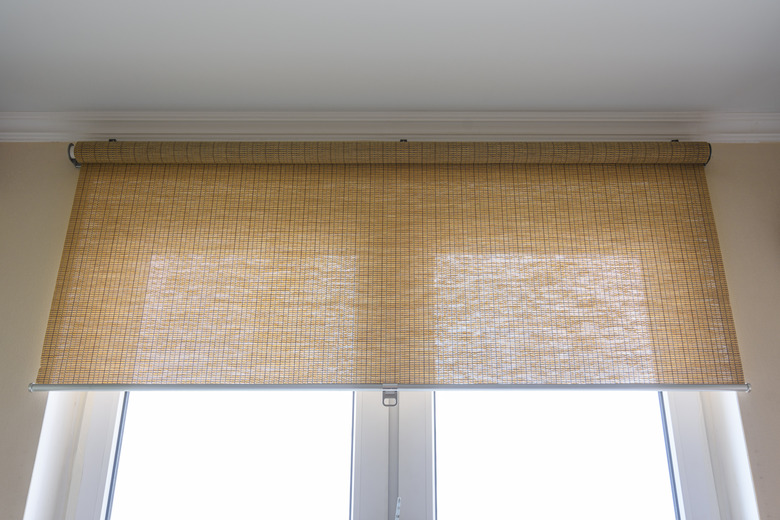How To Get Mold Off A Bamboo Blind
We may receive a commission on purchases made from links.
Bamboo blinds are prone to mold and mildew, particularly if they're in places subject to damp conditions, such as bathrooms, kitchens, and porches. Unless someone in your household has or develops an allergy to mold, there's no reason for you to change your decor arrangements, but you should clean the blinds at least once a month to remove mold buildup as well as dust and bugs. This will make your window treatments last longer and reduce any unpleasant smells that mold creates.
Things Needed
-
Spray-on fungicide
Wash the Blinds
1. Remove the Blinds
Extend the blind fully, then remove it from its fixings and take it outside or into a well-ventilated area. Lay it out flat and use an old toothbrush to clean the bamboo slats, brushing away mold, dust, and bugs. Where mold is more stubborn, brush firmly.
2. Submerge the Blinds
Fill a bath to a depth of 3 or 4 inches with warm water. Add two capfuls of mild lemon or anti-bacterial dishwashing liquid and swish it through the water. Lower the blind into it to submerge it. Leave to soak for five minutes, then lift it up and down a few times, in and out of the water, to shift any remaining dust. If there are any stubborn mold marks, scrub with the toothbrush.
3. Rinse the Blinds
Drain the water out of the bath and refill with clean warm water. Rinse the blind by lifting it up and down in the water. Empty the water and repeat the rinsing process until the water is clear. Alternatively, use a shower head to rinse the blind while holding it up. You might need someone to help you hold the blind while you rinse it.
4. Dry the Blinds
Blot the blind with an old towel to remove as much water as possible, then take it into the fresh air to dry in the wind and sun. If you don't have a garden, take it into a warm room and lay it flat on old dry towels. When the blind is absolutely dry, rehang.
Use Natural Cleaning Agents
1. Remove the Blinds
Unroll the blind, unhook it from its supports, and take it outside or into a ventilated area. Brush with the toothbrush to remove dust and mold.
2. Dampen a Cloth
Dampen a cloth with 3 percent hydrogen peroxide, white vinegar, or a tablespoon of baking soda mixed with enough water to make a paste. Wear latex or rubber gloves if you have sensitive skin.
3. Wipe the Bamboo
Rub the dampened cloth along the bamboo, all the way down the blind, back and front. Pay particular attention to areas affected by mold, and use the toothbrush dipped in your chosen treatment if the stains are stubborn. Allow to dry thoroughly, then rehang the blind. If you have used paste, brush the baking soda off when it has dried, or wipe it off with a dampened cloth.
Keep Mold at Bay
1. Improve the Ventilation
Reduce the likelihood of mold growing on bamboo blinds by increasing home ventilation to prevent the buildup of dampness and condensation. In a bathroom, turn on an exhaust fan when showering or bathing, and open a window to air the room afterward.
2. Reduce Humidity Levels
Cut down on humidity for porch installations. Porches are damp places in wet or humid weather, unless you install a dehumidifier or exhaust fan to keep the porch as dry as possible. Wipe the window every one or two days to remove condensation build-up, particularly under the top area covered by the blinds.
3. Counteract Kitchen Humidity
Ventilate while cooking if you choose kitchen window treatments made of bamboo. Kitchens are hot and steamy when cooking and generate a lot of condensation. Open the window slightly when cooking, or keep the exhaust fan on, and wipe the windows every day or two to help prevent mold buildup behind and on the blinds.
4. Apply Spray-On Fungicide
Treat the blinds with a spray-on fungicide, but make sure it's animal- and human-safe. This will reduce the likelihood of mold appearing, but you should still clean the blinds regularly to get rid of dust and bugs and to prevent mold from getting a foothold on dust and debris buildup.
